
The Arctic is drowning in plastic, and it could kill us all
FREE Catholic Classes
Our planet is drowning in plastic, and this is becoming obvious, even in the pristine Arctic. Researcher now estimate that up to 1,200 tons of discarded plastic waste are circulating in Arctic waters, destroying the environment there with toxic chemicals and killing wildlife.
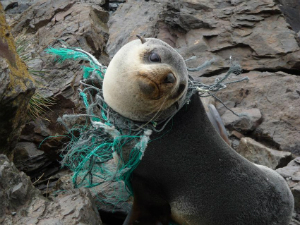
A sea lion is tangled in a net, the result of decades of human disregard for the environment.
Highlights
Catholic Online (https://www.catholic.org)
4/21/2017 (8 years ago)
Published in Green
LOS ANGELES, CA (California Network) -- Humans have been using plastic for about a century, and its utilization has increased dramatically as we've learned to appreciate its many uses. It is lightweight, durable, and malleable, meaning we can make bags, bottles, and even cars out of the stuff.
However, plastic comes in many forms, making it difficult to sort and recycle. Some plastics contain toxic chemicals that can pollute water. Others come in colors that attract hungry animals. Simply put, plastic is bad for the environment. The qualities which make it useful to humans also make it dangerous to animals.
Each ocean appears to have concentrations of plastic where currents swirl pollution into particular areas. Most frequently, these are in the centers of gyres, which are large-scale patterns of circulation in the ocean. At the heart of each gyre is a place where plastic and pollution concentrates. Wildlife in these areas is particularly vulnerable.
It is common for dead birds to be found with large quantities of plastic bits in their stomachs. The plastic accumulates until the animal can't digest food anymore, then dies of malnutrition.
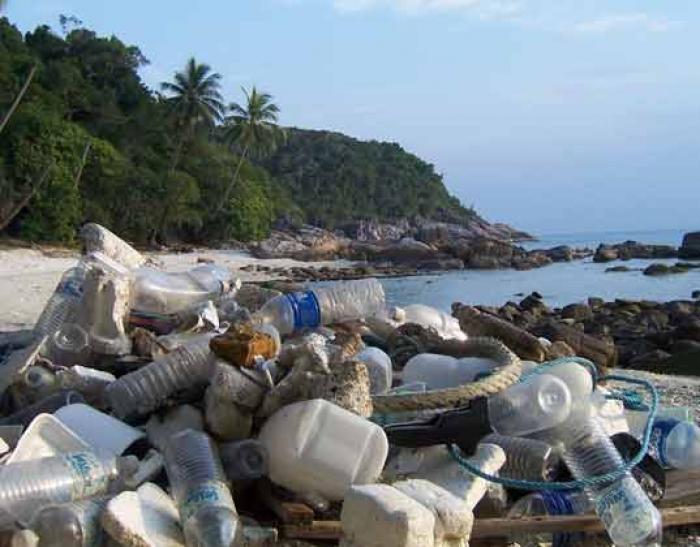
Plastic bottles piled on the beach. These are just a fraction that of the bottles that end up in the ocean from one beach, in the course of a day. Globally, the situation has reached crisis levels.
Fish and other creatures are also being found with plastic in their bodies.
The plastics can also release toxic chemicals which poisons the water and kills both plant and animal life.
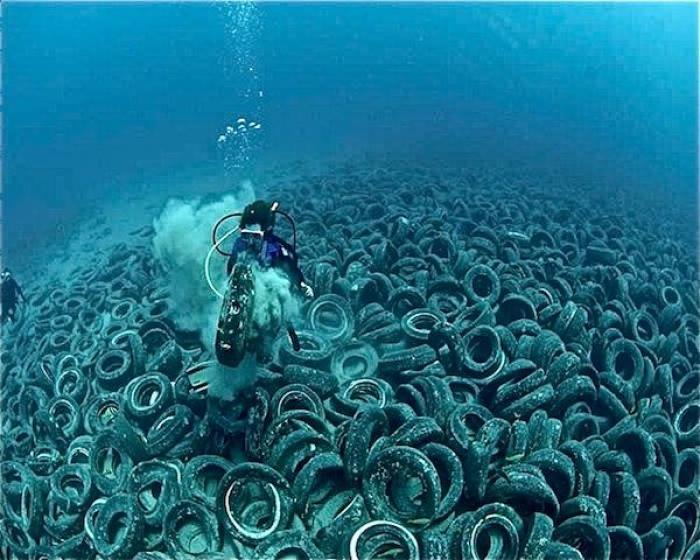
Tires dumped into the ocean release toxins into the water than can poison the environment.
The Arctic appears to be the newest region to be impacted by plastic pollution. Scientists have now discovered concentrations around Greenland and the Barents Sea near Norway and Russia. Some of the plastic is rather old, suggesting the problem has existed for a long time.
The problem isn't expected to improve anytime soon either. Humans continue to expand their use of plastics, which can only exacerbate the problem.
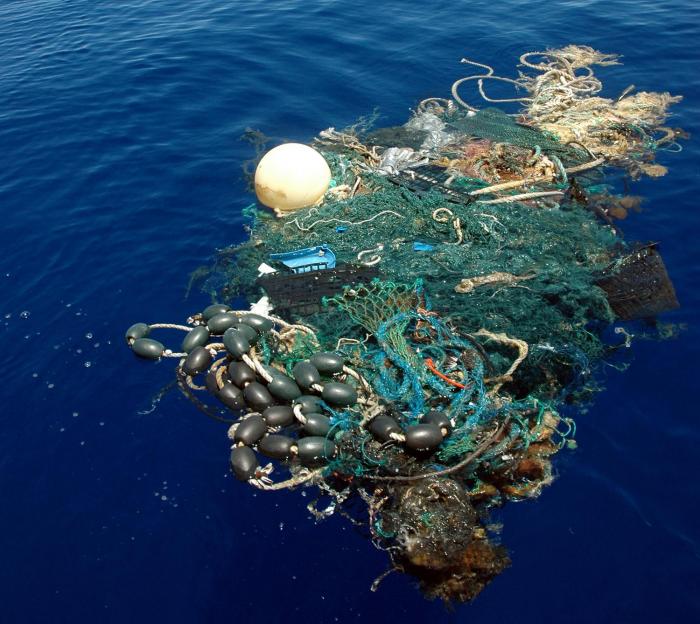
Netting and other flotsam lures birds and other wildlife into a trap from which few can escape.
We rely on our oceans to feed much of the world. However, we are turning them into graveyards as we kill our sea life. We are scripting our demise through carelessness. As plastic invades the ocean and kills wildlife, we risk the extinction of keystone species, which can collapse the food chain.
We need to consider plans to reduce our use of plastic, to increase recycling, and above all, to recover plastic from the oceans where it has been deposited.
There are no comprehensive plans to do any of these things at this time.
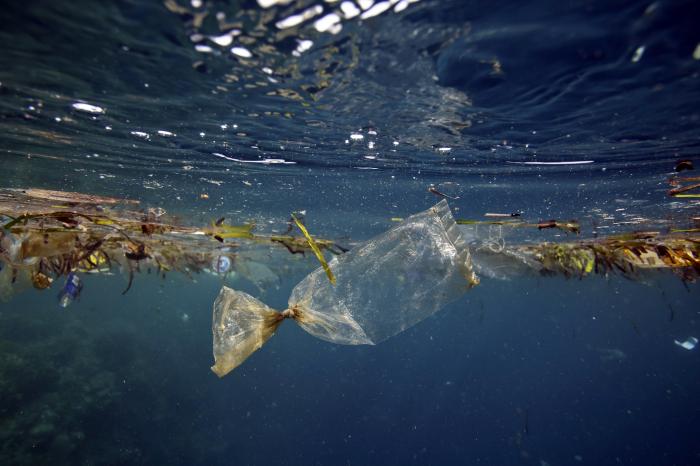
Plastic in the ocean confuses predators. A clear baggie looks like a tasty jellyfish to a turtle.
---
'Help Give every Student and Teacher FREE resources for a world-class Moral Catholic Education'
Copyright 2021 - Distributed by Catholic Online
Join the Movement
When you sign up below, you don't just join an email list - you're joining an entire movement for Free world class Catholic education.
- Advent / Christmas
- 7 Morning Prayers
- Mysteries of the Rosary
- Litany of the Bl. Virgin Mary
- Popular Saints
- Popular Prayers
- Female Saints
- Saint Feast Days by Month
- Stations of the Cross
- St. Francis of Assisi
- St. Michael the Archangel
- The Apostles' Creed
- Unfailing Prayer to St. Anthony
- Pray the Rosary
![]()
Copyright 2025 Catholic Online. All materials contained on this site, whether written, audible or visual are the exclusive property of Catholic Online and are protected under U.S. and International copyright laws, © Copyright 2025 Catholic Online. Any unauthorized use, without prior written consent of Catholic Online is strictly forbidden and prohibited.
Catholic Online is a Project of Your Catholic Voice Foundation, a Not-for-Profit Corporation. Your Catholic Voice Foundation has been granted a recognition of tax exemption under Section 501(c)(3) of the Internal Revenue Code. Federal Tax Identification Number: 81-0596847. Your gift is tax-deductible as allowed by law.








